Mazda3 Gains Style, Luxury, Technology in 2019 Redesign
Filed under: Weekly test drives, Autos
By John Gilbert
Ever since Mazda decided to revise its entire line and change the compact Protege’s name to Mazda3, it has been among my favorite cars in the world. Smooth and well-proportioned lines, great handling balance, and the legendary “zoom-zoom” Mazda engine technology that provided more content than its price would indicate.
For three generations, the Mazda3 has set a new standard among compacts, even including the stalwarts, Honda Civic and Toyota Corolla. The third generation definitely lifted the car to prominence among engineering snobs, adding the incredible technology of Skyactiv engineering, so for 2019, it didn’t seem that Mazda needed to come out with another new generation quite yet.
But the little company from Hiroshima wanted to round up all its recent advances in technology and it was impatient for a new model to properly house it, so the fourth generation hit the showrooms for 2019. You can’t disagree with the decision, because the new sedan looks like a sleek and sportier downsized Mazda6, and the new hatchback is a different car with a different personality, and it is my new favorite. It has a sort of elongated occupant compartment and from the rear corner, it looks like it might be a compromise between a car and an SUV.
It is, of course, too low-slung and sporty to be an SUV, but the cargo room under the hatch is remarkable, and you can flip down the rear seat backrest and expand it more. Plus, among the notable additions such as a clean and efficient interior is a unique, in-house designed all-wheel drive, which lifts the Mazda3 up above its prime competitors like the Honda Civic, Toyota Corolla and the revised Hyundai Elantra GT.
Here’s the only downside is that Mazda3 always has been a bargain in the compact segment, boasting sophisticated features unexpected in a compact, but for 2019, it might be departing the “bargain” status, because the the advanced technology forces it upscale enough to warrant a rise in sticker price.
The loaded test car, in Polymetal Gray Mica, reached $31,000, which is still reasonable if you examine and appreciate the engineering.
I just drove a 2019 Mazda3 Hatchback in Polymetal Gray Mica, with the Premium Package goodies, most of which are very impressive. Hand-to-hand combat with the radio controls took us most of the week, and nobody can convince me there was a need to make it so needlessly complex in the name of luxury. Gone are the good-ol’ days when a Mazda radio featured three buttons on either side of a large knob. Without taking your eye off the road you could push the knob and the radio came on, turn it and you increase or decrease the volume, while the six buttons on either side are presets. What a concept! Once on, it never seemed to keep our memorized settings the next time we started up. The new Bose 12-speaker audio is very good once on, unless you try something as outlandish as changing the station, or switching from AM to FM or satellite. Coordinating your smartphone with the car also is more complex just as most other cars have figured out simplifying it. But if you owned it, you’d set it and never change it. I think.
Ram 3500 Aids Surge to No. 2 Slot in U.S. Sales
Filed under: Weekly test drives, Autos
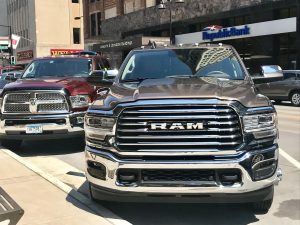
Ram’s 3500, right, and the extended-build of the outgoing Ram, left, boost combined Ram sales past Silverado and second to F-Series.
By John Gilbert
Regular readers of Newcarpicks.com have probably gathered over the years that I love cars of all kinds, and I also like trucks of a reasonably modest size. The difference between “love” and “like” is not insignificant. We also can reiterate that whether dealing with pickups or SUVs, my theory is that anything bigger than big enough is too big.
Cutting back on fossil fuels remains a key as we rumble down the street toward electrification of our vehicles. It never makes good sense to haul around a couple thousand extra pounds and several extra feet of length, and a ton of extra weight — unless you need it. We also bow to public preference, which has caused the top three vehicles in U.S. sales to be full-size pickup trucks, and the next two to be compact crossover SUVs, before we get to the best-selling cars.
The biggest surprise in over a decade is that the traditional 1-2 stature of the Ford F-Series and the Chevrolet Silverado has been disrupted, as the Ram has forcefully passed the Chevy with an extreme upsurge and is closer to challenging the Fords. Those sales figures include heavy-duty trucks above and beyond the full-size, so let’s examine two of the biggest, most potent, most capable, and perhaps the best monster.trucks available.
One is the Ram 3500, and not “just” the 3500. It’s the Ram 3500 Laramie Longhorn Crew Cab 4×4 Long Box, almost as long as the truck itself, which is about as huge as you can visualize a truck that is still legal to drive on city streets. Power is immense, from its 6.4-liter V8, which has 410 horsepower and 429 foot-pounds of torque, capable of towing 31,210 pounds of trailer, and that is if you don’t use the built-in fifth-wheel deal in the bed. The Ram, equipped with dual-rear wheels (dualies) comes in at $81,190.
The other big boy in this week’s evaluation is the No. 1 target of all pickup makers — the Ford Super-Duty F250, SRW 4×4 Crew Cab Limited Style-Side, without the dual wheels or the longest bed, but with a 6.7-liter Power Stroke turbo-diesel that runs with almost alarming silence — compared to the diesels we know and love — but carries a big stick. Or several of them. How about 32,000 pounds of sticks, or cement blocks, or anything else you can imagine? This potent turbo-diesel puts out 450 horsepower and an unheard of 935 foot-pounds of torque.
It is the smallest of the Ford Super-Duty family, which rises above the F150 and also includes the F350 and F450. But if you give it enough power, the F250 is plenty. This one is priced at $84,105, with the base price of $80,240 including just about all the luxury stuff Ford could think of.
Always the trouper, I drove both of these monsters around downtown Duluth, Minnesota, where the steep avenues were no match for either of these power plants. Because of the construction that dominates downtown Duluth, I had to circle around a couple of one-way streets, and then I remembered that my prized little Panasonic Lumix pocket camera, with the fantastic Leica lens, had stopped working. It’s about eight years old, and I would estimate that I’ve had about 10,000 photos published out of that little gem’s digital heart. I pulled into a diagonal parking slot right in front of Duluth Camera, making sure to swing wide enough for my dualies and the Kardashian-like rear wheel housings would clear, and fit tightly between the yellow stripe.
There were no parking meters in sight, so it looked like a free-parking area. I had parked adjacent to a year-old Ram 1500, so I shot a meaningful picture of the two of them together. I was in the store just long enough to find out they no longer do camera repairs, and walked back out to find a parking ticket wedged into may large driver’s door. Closer scrutiny of a small sign at the top of a pole said the block was set up for using a Smartphone to call in your license number and credit card to cover the required expense. A stealthy and quick parking control monitor had given both Rams parking tickets.
The significance of the old-style Ram is that while the 2019 Ram 1500 won everybody’s Truck of the Year competition for its redesign and sophistication, the company would continue to build and sell the old-style Ram as a bargain truck. Both are selling beyond the most optimistic hopes.
Automotive News, which compiles statistical evidence of everything automotive, shows there were 2,992,382 new cars sold in the first six months of 2019, which is a 9 percent drop from last year’s first half; compared to 6,841,952 light trucks, which includes pickups and SUVs, which represents a 2.1 percent rise — a total of more than twice the number of trucks to cars sold!
Ford’s F-Series retains its No. 1 status with 448,398 sales in the first six months of this year, but that is a tiny decrease of 0.6 percent from a year ago. The Silverado sold 255,463, a 12.1 percent drop, just when the new Ram — with came out about the same time as the renewed Silverado — sold 299,480 units, a whopping 28.2 percent increase.
By vaulting past the Silverado, the Ram moves into a strong, challenging second place to the F-Series. For the last month, F-Series sold 79,426, a slight increase of 0.3 percent over July of 2018, while the Ram sold 68,098 — representing a quite-astonishing 56.4 percent increase from the same month in 2018. The new Silverado sold 45,455, a decrease of 15 percent from the same month in 2018.
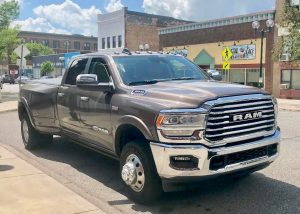
The lure of a home-made ice cream shop was incentive to .parallel park the Ram 3500,k long box, dualies, and all.
For those interested, the top 10 in U.S. vehicle sales are: 1. F-Series, 2. Ram, 3. Silverado, 4. Toyota RAV4, 5. Honda CR-V, 6. Honda Civic, 7. Toyota Camry, 8. Nissan Rogue, 9. Chevrolet Equinox, and 10. Toyota Corolla. The only three cars among the top 10 for the year are the Civic, the Camry and the Corolla. The Rogue, which stood fourth a year ago, ahead of prime rivals RAV4 and CR-V, has dropped 22.5 percent, but still holds fifth.
Truck-folks rule, and if you doubt it, I stopped to get some gas in the Ram, which took some serious maneuvering to avoid knocking over the gas pumps or the building itself, and as I opened the door and stepped with perfect timing to land on the instantly-appearing running board before descending the rest of the way to Earth, a pleasant female voice said, “Nice truck!” A woman refilling her Silverado pickup on the other side of the pumps, has a big truck, but she truly admired that I had a BIG truck.
For those hauling a heavy trailer, or a trailer house, it would seem logical to go up to the huge (huger?) turbo-diesel, a 6.7-liter inline six that climbs to 900 foot-pounds of torque, but there definitely is something to the sound of the 6.4 normally-aspirated V8 that sounds almost Viper-like with its throaty roar. And it takes off and hits 60 in about 6.2 seconds, if you believe Motor Trend. Stability and road-holding are exemplary in the big Ram, which, as they say, drives smaller than it is. The spacious room in the rear seat, with all the leather flaps and trim items that make it almost limousine-like, reinforces the image established by the front bucket seats.
The big Ram 3500’s surprising agility helped when I had to negotiate about 80 miles of single-lane orange-cone maneuvering for Interstate 35 resurfacing while driving to Minneapolis and back. And I showed 16.5 miles per gallon, which, as they say, is not bad for such a large truck.
It is a full crew cab with all of the luxury features that have made the Ram the darling of the pickup segment for 2019, with Laramie’s embossed leather interior, and that iPad-size 12-inch center screen that allows more connectivity functions than you and I could have imagined a couple of years ago. And it has the longest bed in the pickup world, fully sprayed with grippy stuff. The combination of the longest occupant compartment and the longest bed make something like its ParkSense front and rear parking assistance electronics seem somehow mandatory but inadequate. Parking is simple: Just find two parking places end to end and use ‘em both.
The Ram was painted Walnut Brown Metallic, with light mountain brown interior on its premium leather bucket seats.
The Ford Super-Duty is similar in utility and versatility, and helps keep Ford atop the segment for now, because along with the “normal” sized F150, the 250 joins the 350 and 450 among the heavyweights, and also has a new baby brother in the Ranger, which is a modest, medium-size pickup we will be reporting on in a few weeks.
The impressive thing about the 6.7 Turbo-diesel is that Ford is making its own diesel these days, and figured out a way to put the new clean-diesel fuel to good use and make the thing run strong and without the mind-numbing thrum of every other diesel in the truck biz. It has a 6-speed automatic, compared to the Ram 3500’s 8-speed, but the overflowing torque doesn’t seem to betray any shortcomings.
The Super-Duty Ford was painted Silver Spruce, which was a modest silvery-green that was very attractive, and harmonized with the Camelback leather interior. Like the Ram, it had running boards that slide out electrically from the body to meet your feet and at least go halfway toward reducing the pole-vault requirementt otherwise necessary to enter the vehicle.
I must confess that I didn’t get enough miles on the Super-Duty to require refueling, although when it was full it showed 700-some miles available before running out.
Both trucks had the gooseneck trailer towing device, surround-view rear camera, keyless entry, and all the connectivity and audio gadgets. If you’re real tall, you could sleep more comfortably in the extra-long Ram bed. If you want to go seriously off the road, you might prefer the Ford Super-Duty, which seems to have more skid-plate protection on the underside. If you like fancy interiors, you’ll have to choose for yourself. If you like powerful audio, both have premium units, with the Ram installing a 17-speaker Harmon Kardon upgrade and a power sunroof, while the F250 Super-Duty has a twin-
panel moonroof, and a 4G WiFi hotspot. Both of them had heated and cooling ventilated seats, and it had a massage feature on the front buckets.
My wife, Joan, found the Ford controls for the seat massagers. I never looked for them on the Ram. It probably had them too. Tough choice, but the Ram is on a sales rampage and could close the gap more as 2019 progresses. I haven’t yet become convinced that a gigantic truck that gets southward of 20 miles per gallon is the ideal vehicle, unless you really need it.
If you’re hauling a house trailer or a large RV, then get into the same mindset you had when choosing a house. Just be aware that your first house may not have had the amount of room of either the Ram 3500 or the Ford Super-Duty.
Upscale Prius Flashes Style, AWD, Great Economy
Filed under: Weekly test drives, Autos
By John Gilbert
When Toyota and Honda led the way into hybrid engineering, I was impressed to track their different techniques to combine electric motors with gasoline engines. Some resisted, and I realized I was risking my status as a card-carrying purist, but it was immediately apparent that hybrids were the stepping stone to what is surely a coming era of electric cars.
While Honda wavered a bit along the way, and other competitors from South Korea and Germany have emerged, the Toyota Prius has remained the vanguard. Toyota’s “Hybrid Synergy Drive” has powered the subcompact Prius to such popular status that some feel it has become the new icon for Toyota’s worldwide success, even replacing the Camry and Corolla as the company’s signature vehicle.
Consistency is Toyota’s hallmark, and it is the reason for the everlasting success of the midsize Camry and compact Corolla, but the Prius has countered that reputation, taking some chances with edgy styling and staying at the top of the technology game being played at the highest level of automotives.
Prius now has expanded to a diversified portfolio with different models and styles, and the standard front-wheel-drive models continue to show increasing fuel economy. Their consistency may have left some cynics behind, but amid competitive hybrid models from Honda, Hyundai and German competitors and assorted all-electric cars, there are reasons to take a new look at the Prius.
I have just had the opportunity to test a 2019 Prius Limited, the top of the line hatchback 4-door sedan with all-wheel drive. Interesting. The electric-motor-powered front-drive Priuses have perfected the ability to turn gas-engine power and regenerative braking into keeping the battery-pack electric motors going, but all-wheel drive seems a stretch.
Turns out, the 1.8-liter 4-cylinder engine is not tuned for highest power but to be efficiently coordinated with the electric motors, so its listed 121 horsepower doesn’t mean much. The test vehicle had performance-vehicle takeoff and swift highway operation.
The car was Supersonic Red, one of two new colors exclusive to Prius, and it practically glowed with brightness. It also has the wedge, fast-sloping arrow shape in silhouette, rising from a low nose and fitting well into the various contours that end up at the well-sculptured rear. The hatch has a huge window, which extends below the rear deck spoiler wing, which aids rear visibility greatly.
Front visibility for the driver is enhanced by the now-familiar positioning of the instruments and information screens on a centrally located region of the dashboard. That means without the speedometer binnacle, the driver looks straight down at the road ahead, with a head-up display.
Wrangler Keeps Changing, but Stays the Same
Filed under: Weekly test drives, Autos
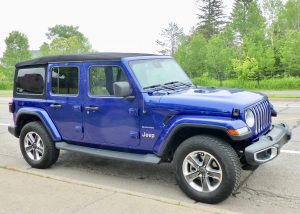
Same familiar look, but the new Jeep Wrangler has considerable refinement beneath the stunning blue paint.
By John Gilbert
It’s been quite a model year for FCA already. FCA, of course, stands for Fiat Chrysler Automobiles, and it encompasses the Italian parent Fiat, along with what used to be Chrysler Corporation — Chrysler, Dodge, Jeep and Ram — blended into Fiat and its impressive holdings, Ferrari, Alfa Romeo, Lancia, and, of course, Fiat.
Thanks to Ram and Jeep, FCA has seemed to have withstood the current woes plaguing the global auto industry, in which cars are in the downward stroke of the vehicle-buying pendulum, headed for what many executives at General Motors and Ford see as oblivion, displaced by the upsurge of trucks — all manner of trucks and SUVs, which have zoomed past cars in popularity and profitability.
Ford has declared it will stop building almost all cars — Taurus, Fusion, Focus, Escort, you name it — to make room for building more trucks. GM says the same thing, planning to eliminate all sorts of historically significant vehicle nameplates in order to convert plants from cars to trucks, trucks and more trucks.
It’s the same with Toyota, which is even now changing over a plant that builds Corolla compacts to accommodated building more RAV4 crossover SUVs — now the top nameplate at Toyota, even outselling Camry and Corolla.
FCA has not ignored the trend, and is eliminating a few cars, although it has fewer cars than Ford or GM. It sounds as though the Charger and Challenger will remain, but parent and dutiful owner Fiat is watching closely and pulling the strings. Ram trucks, and the amazing Jeep line of utility vehicles have carried the corporation’s stabilization.
The Ford F150 pickup remains the top-selling vehicle in the U.S., but has leveled off, and the traditional runner-up, the Chevrolet Silverado, has fallen off even more in their annual duel of full-size trucks. Despite the tiresome late-night and sports-event ad campaign coming at you with alleged “real people, not actors” who rave about how much more they love the Chevy truck — including one that says, “I traded my Ram for a Silverado” — one of the more startling bits of information is the current marketplace results.
With a classy redesign and an amazingly attractive interior, word out of Detroit was that the Ram outsold the Silverado almost 2-to-1 in the month of June, something I found hard to believe, based on habitual U.S. buyers and their knee-jerk habits.
All of which brings us to today’s topic, which is: Jeep.
While the auto industry has struggled for most of this model year, FCA has improved its total foothold, thanks to the Ram and the Jeeps. The Challenger and Charger remain high-performance muscle-car throwbacks, and the Pacifica minivans, improved though they are with their latest hybrid models, have dropped off a bit and FCA is thinking about adding a renewed Caravan or Voyager base minivan that could sell for less than the high-tech Pacifica.
Jeep, meanwhile, stands alone as one of the most interesting and curious brands. It has some very impressive new family models, such as the Grand Cherokee, the Cherokee, the Compass and the compact Renegade, but the backbone of the whole Jeep line is the Wrangler — the basic, off-road specialist that has been refined thoroughly and repeatedly to become more “civilized” but without losing any of its quite-amazing off-road capability. And you can’t get more civilized than the flashy blue paint on my test Wrangler.
The Wrangler proved it is refined to the point where, amid dozens of compact SUVs taking over the marketplace, Motor Trend tested 20 or more and named the new Wrangler as its “SUV of the Year” for 2019. Incidentally, Motor Trend recently decided to add a third candidate evaluation with SUVs added to the traditional car and truck of the year listings, and the Ram was named Truck of the Year, giving FCA two of the exalted three awards.
I wouldn’t have named the Wrangler SUV of the year in the face of some overwhelming and impressive competition, although when competition gets so tough, it’s understandable why Motor Trend every once in a while clears the air by naming something like the off-roading specialty Wrangler. I am completely impressed with the Wrangler, and those who spend any recreational time off-roading will celebrate the award.
Recently, I had the chance to revisit the 2019 Wrangler, and a mid-summer test week verified my earlier findings that the 2019 Wrangler has made that giant step up to become a worthy family vehicle, with the elimination of the pogo-stick bounciness that I thought was standard equipment on Wranglers.
You could safely say that the Wrangler has made a positive change in -road onrefinement without giving up any of its traditional and historic capabilities off-road. Besides, it’s absolutely cool.
My test vehicle’s biggest obstacle was its name. It was the Jeep Wrangler Unlimited, and indication that it is equipped for heavy-duty use. It was the Unlimited’s elite Sahara model, which means fancier features that shouldn’t prevent it from bounding over the Sahara Desert’s sand dunes like the old television series “Rat Patrol,” which made World War II Jeeps its central figures. And it was “Trail Rated,” which means it is built to go anywhere, whether there are roads or not.
That’s it: The 2019 Jeep Wrangler Unlimited Sahara 4X4, Trail Rated.” But when you want to bring all those subtitles into the spotlight, so the guy parked next to you at the ballgame won’t think you have just an ordinary Jeep, you get silver badges that say “Jeep” in familiar bold type, and above that a smaller “Sahara,” and above that a round emblem that denotes the “Trail Rated” capability.
Fortunately, there was no available room to add to the price tag, either: $52,210. That’s up from the base price of $38,395, and reflects the addition of all sorts of modern conveniences, such as the back-up camera, the third generation Dana rear axle over the heavy-duty suspension with its gas-charged shocks, skid plates and shields protecting the fuel tank, the transmission and the transfer case, a trailer-sway damping feature, electronic stability control and roll mitigation, security device, and, it says here, universal garage door opener.
Those are standard on this model, and there are options added on, including: leather trimmed seats with “Sahara” embossed, cold weather package with heated seats and steering wheel, remote start, LED reflector headlights, foglights, taillights and daytime running lights, a premium audio system, rear park-assist, blind-spot detection, hill-descent control, and full frontal collision avoidance. Oh yeah, and there’s satellite radio, push-button start, and a GPS that plays out on a center stack screen.
You think those Rat Patrol ruffians might have enjoyed those features?
It was blue, but hardly a garden-variety blue. Named “Ocean Blue Metallic Clearcoat,” that moniker falls short of defining the stunningly deep blue that penetrates your senses like a laser-beam.
Among the selections you are required to make is with the engine. There is, you should know, still another upgrade, to the “Rubicon” model, which includes the 3.6-liter V6 engine, although I am convinced the way to buy the Wrangler is with the new 2.0-liter 4-cylinder I had in the tester.
Consider these facts: The 3.6 V6 has 285 horsepower to the 2.0’s 270; but the V6’s healthy 260 foot-pounds of torque can’t beat the 2.0’s 295 foot-pounds. The V6 has a 6-speed automatic, the 2.0 gets the new 8-speed.
The lighter 4-cylinder also aids the Wrangler’s agility, with improved balance, although both, of course, have part-time 4-wheel drive that can be locked into your choice of settings. When on the road, you probably would choose the rear-wheel-drive only setting to aid fuel economy, and be impressed with something approaching sporty car handling.
Those who have driven or ridden in Wranglers from a decade or two ago might still recall how potent it is in clamoring over rocks and hilly terrain, seemingly without regard to how steep the challenge might be. If your experience with Jeeps is more contemporary, as in the luxurious Grand Cherokee, then you might look on the Wrangler with scorn, assuming it to be primitive.
Never, however, assume. The new Wrangler Whatsitsname will still do everything the old off-road-beating, rugged rock climber will do, but now it cleans up to transport you and your family to the country club. It even has a partial soft-top to turn it into a virtual convertible. We won’t get into removing the doors and leaving the rollbar -quality support structure exposed as you bound off-road.
I still don’t know that I would name it SUV of the Year, but I’m pretty sure that if and when you choose an alternative vehicle for that honor, the Wrangler will beat it off the road, and maybe on the road, too.
Golf SE Can Avoid All the Potholes — Almost
Filed under: Weekly test drives, Features, Autos
By John Gilbert
The annual complaints from Northern Tier U.S auto drivers drivers about the horrible condition of streets and highways has reached a pinnacle this year. We can blame Climate Change, or Global Warming, but a particularly long and tough winter of alternating freezing and mild temperatures has caused countless chunks of pavement to break, buckle and otherwise abandon their intended resting places, leaving nasty traps waiting to ambush unsuspecting tires, wheels and suspensiuon parts.
My city, Duluth, Minnesota, is, I submit, deserving of a nomination for the worst, and who can deny or judge it? I enjoy driving and reporting on an assortment of new vehicles every week to report on them, and I seek out varied real-world roadways to check on the steering and suspension of all these vehicles. But I certainly did not want a close-up and personal validation of my opinions of road conditions.
Out of familiarity with the roads that I travel most frequently, and so it was as I drove a 2019 Volkswagen Golf SE 1.4-turbo for a week recently. I had driven various VW Golf models, including the GTI, Golf R, and reported on a Golf SE with a stick shift during a minus-35-actual stretch of Minnesota winter. And while not trying to overdo it with repetitious reviews, this is supposedly the final year that we will get the tried-and-true Golf models in U.S. showrooms, which I have declared a sad thing; we’ll enjoy getting the GTI and Golf R, but the base car — the SE — is special on its own. It comes with VW’s newest engine, a 1.4-liter four-cylinder from a whole new engine family, bolstered by a turbocharger to extract surprising power from such a small engine.
The test car has a base price of $25,245, and a sticker of $27,435 as equipped. With only 147 horsepower, its 1.4 lacks the power of the corporate 1.8 or 2.0, but it has abundant torque, which peaks at 184 foot-pounds at a mere 1,400 RPMs — more than the bigger engines. This test car, in a medium Silk Blue Metallic paint job with alloy wheels, had an 8-speed automatic with almost-hidden paddle shifters on the steering wheel. So you get beyond the lack of horsepower by downshifting, then running the revs up to the pleasant feeling as the torque comes through.
Golfs always ride well, with supple but moderately firm suspension, which allows even the base car to take turns in a sporty manner. With all the contemporary safety elements built in — electronic stability control, anti-slip regulation, anti-lock brakes with electronic brake assist — the 4-door hatchback Golf is a safe, solid luxury compact that can get more than 38 miles per gallon.
I was able to attain 38.2 mpg in combined city-highway driving, while EPA estimates show 37 highway, and I was over 36 in all-city operation. That’s up there in TDI country, where only the previous turbo-diesel could go.
The 225-45 17-inch Pirelli P7 tires obviously contribute to the excellent handling and smooth ride. So there I was, negotiating the pits and pitfalls of Duluth’s nastiest streets and roads through five days of the week.
The rural highway we live on is a few miles out the North Shore, and as you drive south to join the freeway for the ride into Duluth, you leave the township, with its St. Louis County-maintenance, and enter Duluth’s city limits, where city crews take care of the surface. You don’t need the sign that says “Duluth,” because you can see the white surface, probably concrete, end where it meets the gray asphalt of the city segment.
Without question, the concrete stays amazingly smooth, and the asphalt chunks out in a harsh and irrgular manner. As I drive down on the 55-mph county segment, and slow for the 30 mph residential city rules, I have a practiced routine. The familiar start to the asphalt has re has a couple of modest potholes seem to join hands just to the right of the middle of the road. Being able to see a couple blocks ahead, I generally swing into the oncoming lane until I get past that stretch, then swing back into the right lane.
This time, with my wife, Joan, and older son, Jack, riding with me to meet up with our younger son, Jeff, at the Trampled By Turtles concert at Bayfront Festival Park, I saw a car or two coming toward us. I had to abandon my normal plan, so I chose to straddle the rough patch or go wide right. I chose to go wide right.
Ka-Chonk! My right front absorbed a rugged hit. Turns out, when I swung wide right to miss the moderate but annoying potholes I was aware of, my right front struck a fourth pothole 10 yards ahead that I was not aware of. It was a long and deep pit. As the blow reverberated, I continued driving, feeling nothing out of sorts, and it was with great relief that no serious damage could be detected.
I pulled onto the freeway and got up to the 65 mph speed limit without any hesitation or vibration, but after about a mile, a little warning sign came on the instrument panel: “Air loss detected in right front tire.” I slowed down immediately, cursing the bad luck, but I couldn’t pull off immediately because of a narrow shoulder. By the time I could, I felt the pull of the deflated tire. Sure enough, the impact of the tire striking what amounted to the far cliff of the Grand Canyon not only blasted a hole in the tire’s sidewall, it scratched up the flashy alloy wheel a bit, too,
It was impressive that the Pirelli P7 took the blow and held its integrity for a mile or so, and it was more impressive that the tire-sensor relayed such quick and accurate information.
With Jack as lead pit-crew guy, we changed it for the space-saver spare, and I drove gingerly the rest of the night and on to Sunday. The timing of my test-drive, though, was to end when the Chicago fleet delivery guys would pick up the Golf SE at 11 a.m. Monday and drive back to Chicago.
We didn’t want them driving that far on the space-saver, so I called Volkswagen of Duluth early Monday morning, explained what had happened, and inquired about their supply of P7s. They had four in stock, they said. When I got there, however, we realized that they were from a year-old supply and the new one was an inch larger, at 17. We talked it over, and I asked if they might have exactly the same SE model on their lot, and they did. Service manager Calvin Edel summoned the unsold car and his service crew did a quick remounting job.
Just to make sure there would be no imbalance, they put the new tire on the right rear and rotated the right rear to right front. Good move. I made it home about an hour before the drivers showed up, and they appreciated the quick and efficient work of Volkswagen of Duluth.
That VW dealership, by the way, is primarily responsible for recalibrating and legalizing almost all the many recalled Golf, Jetta and Passat TDI models to bring their turbo-diesel engines into full compliance, before being sent to dealers throughout the Upper Midwest, where they represented one of the great car values of our time. That’s impressive, especially if they do as thorough a job as they did changing and remounting that tire for the Golf SE.
The caution with which we take on the Pothole Obstacle Course driving through Duluth has been amplified. We’ve got some potholes this year that, to be fair, should register on the nav screen’s GPS.


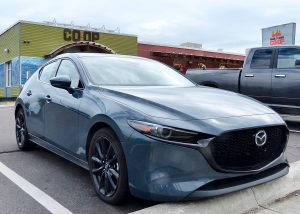
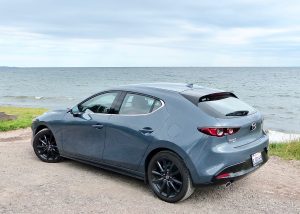
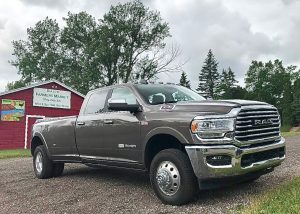
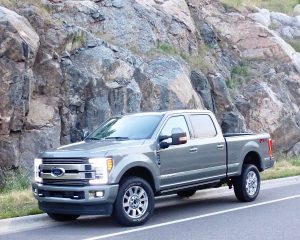
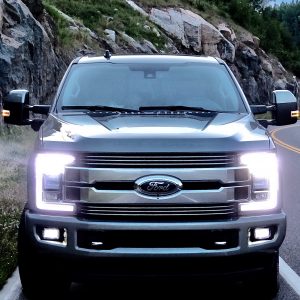
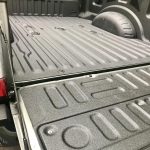
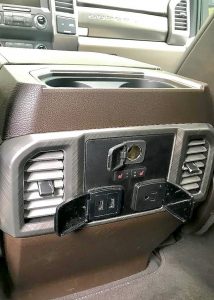
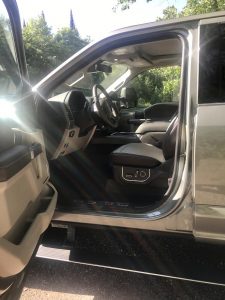
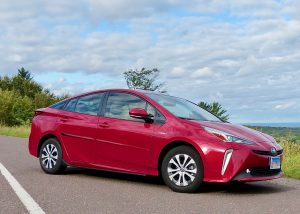
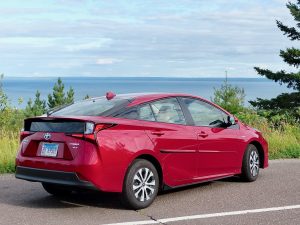
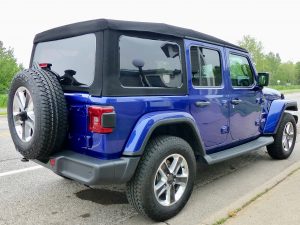
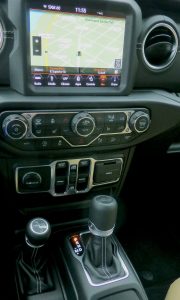
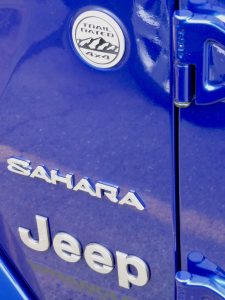
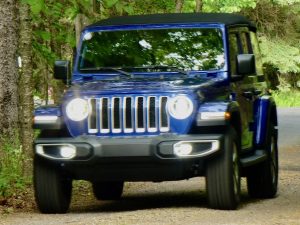
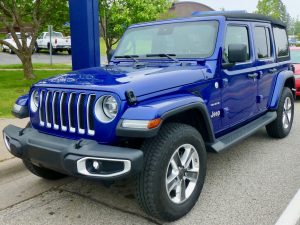
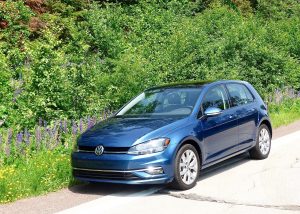
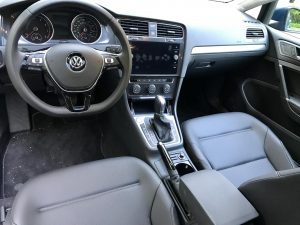
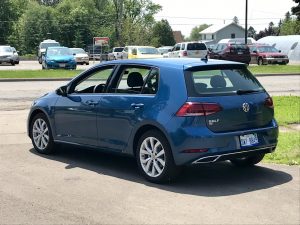


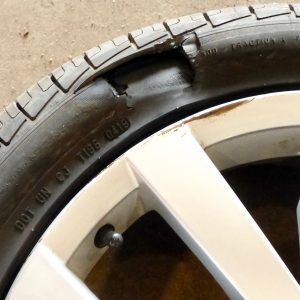
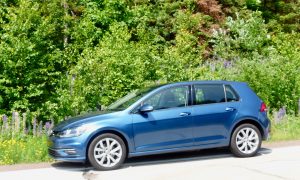
 John Gilbert is a lifetime Minnesotan and career journalist, specializing in cars and sports during and since spending 30 years at the Minneapolis Tribune, now the Star Tribune. More recently, he has continued translating the high-tech world of autos and sharing his passionate insights as a freelance writer/photographer/broadcaster. A member of the prestigious North American Car and Truck of the Year jury since 1993. John can be heard Monday-Friday from 9-11am on 610 KDAL(www.kdal610.com) on the "John Gilbert Show," and writes a column in the Duluth Reader.
John Gilbert is a lifetime Minnesotan and career journalist, specializing in cars and sports during and since spending 30 years at the Minneapolis Tribune, now the Star Tribune. More recently, he has continued translating the high-tech world of autos and sharing his passionate insights as a freelance writer/photographer/broadcaster. A member of the prestigious North American Car and Truck of the Year jury since 1993. John can be heard Monday-Friday from 9-11am on 610 KDAL(www.kdal610.com) on the "John Gilbert Show," and writes a column in the Duluth Reader.